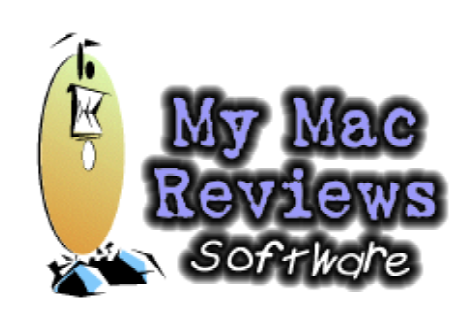Hash Animation Master 7.11
Company: Hash Inc.
Price: $199.00
http://www.hash.com
Oooh! have I got something neat for you guys!
“Bill! where ya been?”
Sorry I haven’t been around in awhile… you know, the usual… buried in work, wife had a kid, that sort of thing.
But anyway, have I got something neat to tell you guys about!
“Well… spill it!”
OK, ok, it’s Hash.
“What? Go into selling drugs?!”
Nonononono! Hash is a program! Another 3D program.
So, what’s so great about it?
I’ll tell you in a minute. But first, the statistics. You get:
Hash Animation Master (Hash Inc.)
Program CD-ROM (with lots of nifty stuff on it)
Manual
Sample CD-ROM full of artists’ and animators’ works
Registration Card
and…
a box (whatta deal!)
Cost: $199.00
Now, as most of you know, I have the working theory of “low overhead, high income, and the biggest bang for your buck.” And while I was pleased to find some great stuff I could tell you about, this is probably one of the biggest finds I’ve ever found!
“Whaddaya mean?”
Well, I’ve been looking for a good 3D character animation program for some time, and although I’ve found some good 3D modelers (Strata Studio Pro, etc.), I had yet to find a good REASONABLY PRICED Mac-friendly 3D character animator and modeler.
Until now.
This is a modeler built for artists, not tech-heads. It utilizes splines (as does Illustrator and Freehand) to create its 3D models, as opposed to the more common polygonal constructions (lots of tiny triangles woven together to create surfaces). Using slines means it can keep large model sizes small and also make it easier to build complex, continuous models (like a person) without all the hassles associated with a traditional poly-based modeler. The only “downside” of this approach is that people like myself—already familiar with a poly modeler—now have to “Think different” about how to construct things. This meant I was obliged to read through the manual (sorry, this is not a “jump in and go” application), and I emphatically recommend others do the same.
I thought it was a little odd that you had to go nearly halfway through the book before you even started to learn how to use the modeler, but the reasoning behind this is simple and solid: Hash wants you to think carefully about what you want your character to do before you begin to build it. Plan first, and you won’t waste any more drive space, effort, or time than is necessary. Modeling can be a complex process, so they rightly feel that people should have a game plan.
Unlike other spline-based modelers, Hash has no available primitives (cubes, spheres, cylinders, cones), and therefore you must build everything from the ground up (this would be a nice feature to add to the next release). What it does have, though, is “patches”!
“Patches?”
OH YEAH!! SPLINE PATCHES AND PATCH HOOKS!!!
“What’s that?”
Glad you asked! Patch hooks are for joining two different models (like an arm and a hand) together into one seamless model (a wrist) so it looks more natural than having them just “shoved” together. A Spline Patch is just that: 3 or 4 splines joined together to make a “patch,” or flat surface.
The tutorials are quite good with one notable exception being the Focke-Wulf tutorial (a bit of advice, don’t try to join the wings to the fuselage as they show in the book; the writer apparently forgot that anyone doing it is a “newbie” and not a seasoned expert) which lacked some information necessary to complete it as shown.
The renderers are great (though I felt Strata’s were better), and I must say that one of the best additions was a “toon” renderer. You know, you ever get an itch to take your 3D model and make it look like it was hand drawn just so you could freak out the fine artist-types who think that anyone who uses a computer to “make” art is evil? Well, just use the toon renderer on your animation and then show them a video tape copy of it. When they compliment you on finally “abandoning all that is evil,” you can then have the distinct diabolical pleasure of telling them how it was really done.
Texture mapping can be a pain (especially when dealing with faces), and one of the nice features that Animation Master has is “flatten,” which flattens your model so that you can export a picture of the flattened model for making a more accurate texture map.
As I have been extremely busy lately, I haven’t had as much time to deal with animating figures as I would like, so I’ll probably be writing an addendum column on this subject in the near future. But for now, I’d like to say that there are some truly impressive things about this company that the software giants could learn from: tech support and bug fixes.
When they say tech support, they mean TECH SUPPORT! They never talked down to me, and I haven’t had one bad experience getting them to answer my stupidest questions (ok there was that one time I called up doing “The Brain” from “Pinky and the Brain”)…
As far as bug fixes are concerned, I can’t remember finding a more responsive team! They released v7.1 in May or thereabouts, and as of this writing they were up to 7.1l. If they find a bug, a fix is up in about a week or less, with none of this “it’s not our program, it’s obviously you” crap (HELLO, ADOBE, ARE YOU LISTENING?!?).
So, listen, I’d strongly go to http://www.hash.com and check this product
out! It’s definitely a 9.5 on the Very Cool-O-Meter, which when converted corresponds to a MacMice rating of 4.5. HIGHLY RECOMMENDED.
Ciao for now!
MacMice Rating: 4.5 out of 5


Leave a Reply
You must be logged in to post a comment.